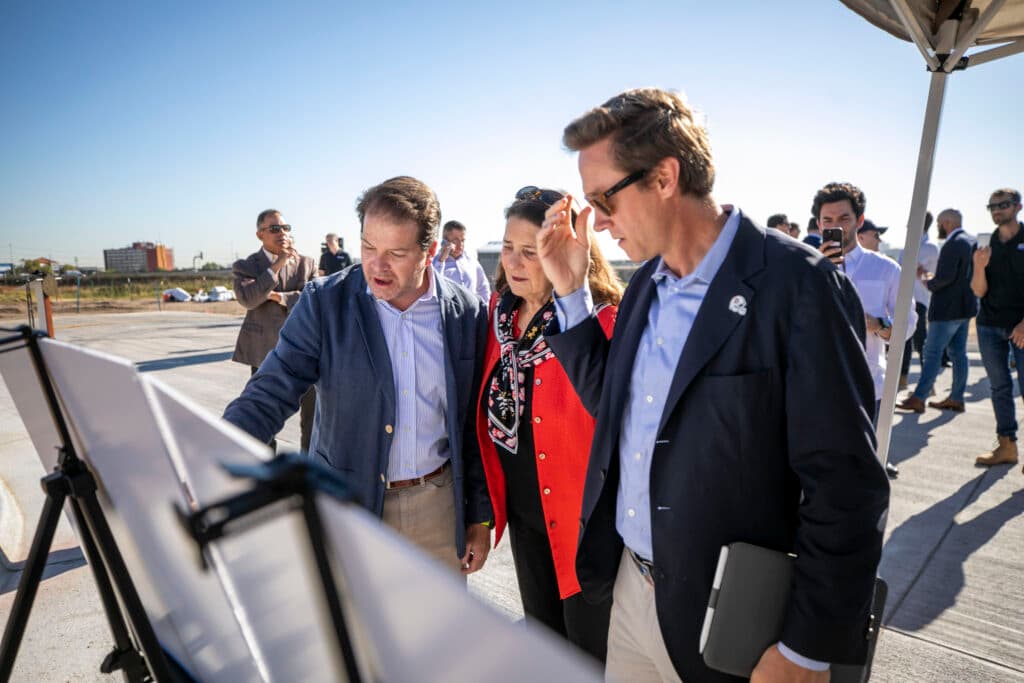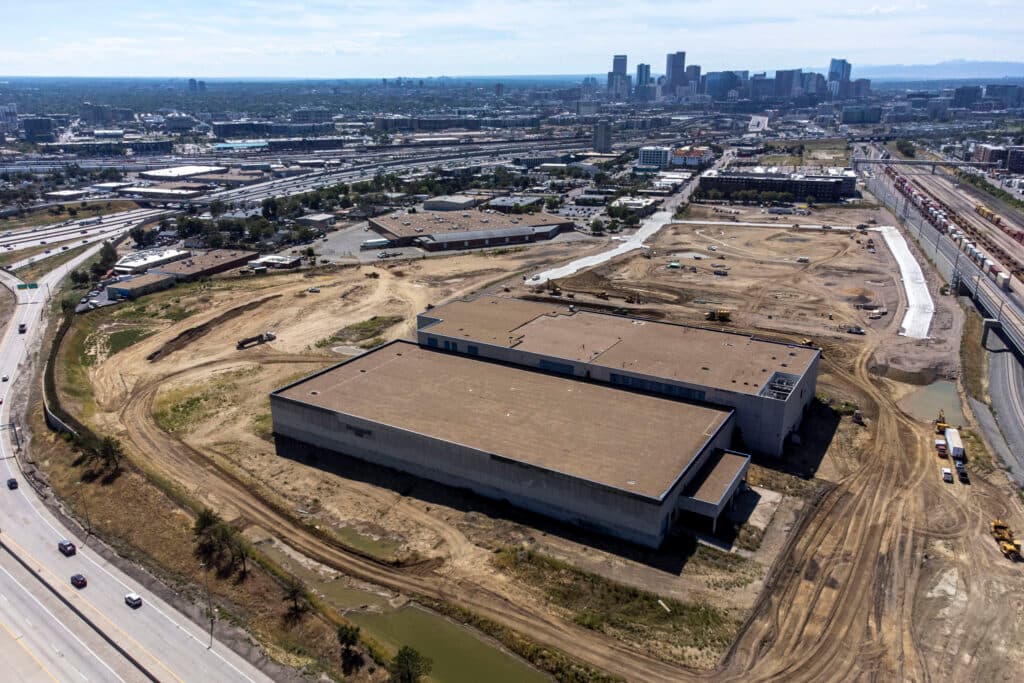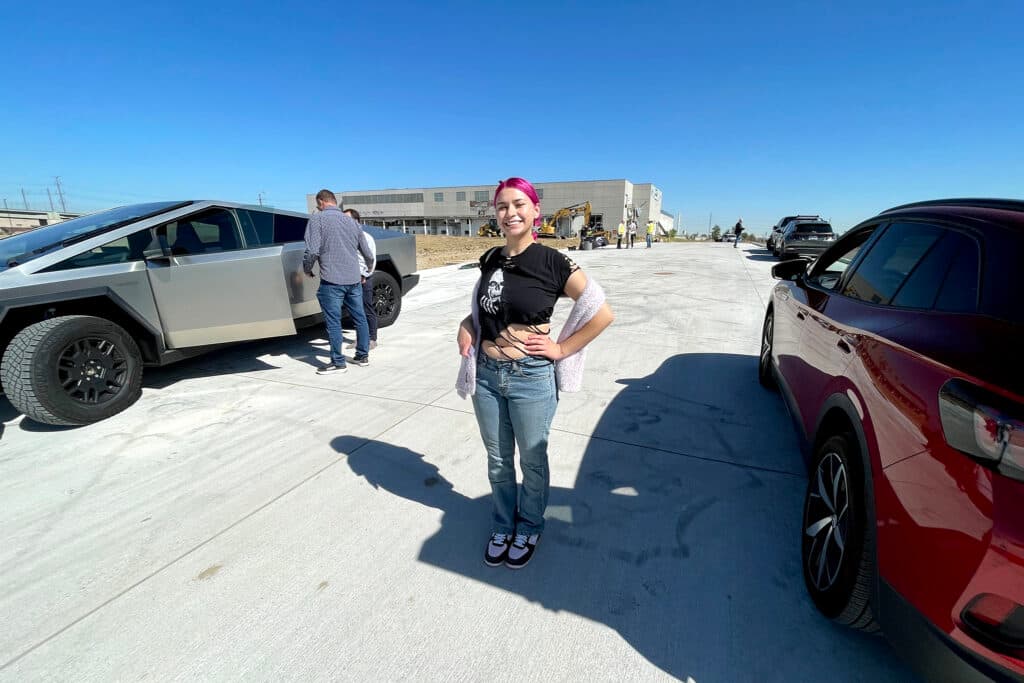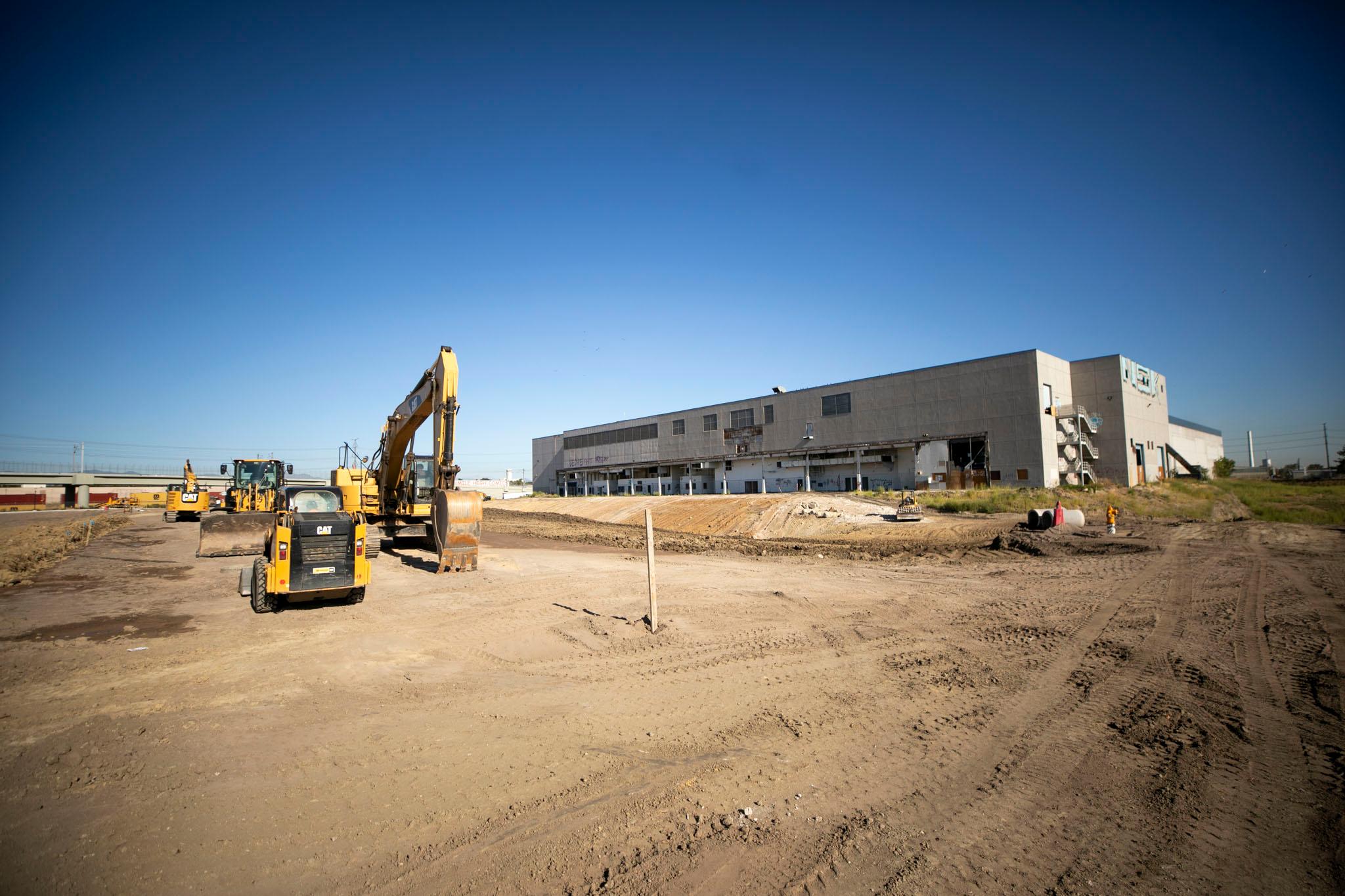For months, bulldozers have been digging up the ground around the old Denver Post printing plant in Globeville. That’s the massive rectangular building just west of I-25 and south of I-70 covered in graffiti.
Soon, the area will be known as Fox Park, a neighborhood in the works on a former superfund site between Sunnyside and Globeville.
While the printing plant’s been shuttered for years, the building’s become what may be local street artists’ best unsanctioned canvas. And the 41 acres around the plan, dubbed Fox Island because of how poorly connected it is to the rest of the city, have been a yawning gap in a growing city.
Developers, despite being so eager to gobble up acreage and turn it into housing elsewhere in Denver, steered clear of Fox Island for years, even as more than 500,000 drivers a day passed the site.
Why? The land’s been a toxic dump.
It was once the site of the Argo smelter from an era when Denver processed heavy metals. The land was declared a superfund site — a hazardous place — by the Environmental Protection Agency in 1999.
Over the years, neighbors in Globeville have suffered from cancer. The neighborhood is still considered one of the most polluted in the country.
While much of Denver boomed, Globeville has been a home for working-class families with deep roots in the area. The soil’s toxicity has staved off most development and served as a deadly buffer to gentrification.
On Wednesday morning, developers, federal and city politicians, architects and others gathered at the site to celebrate the end of a massive environmental cleanup that will allow the development to come.

Here are six things we learned at that celebration.
City Council has been eying the land — and its possibilities — for years.
Back in 2012, then-City Councilmember Judy Montero brought her then-aide Amanda Sandoval to the outskirts of the land and asked what she could imagine there. The two spent an hour dreaming up possibilities of what Globeville, one of the most polluted neighborhoods in the country, could enjoy on the site.
Urban forests, affordable housing, a grocery store and space for arts and culture all topped their list.
More than a decade later, Sandoval, now City Council president, is celebrating a new future on the plot of land: the creation of Fox Park. And much of what she hoped for is coming.
A World Trade Center will bring offices, retail, restaurants and more. And that’s just a taste of what the $4 billion investment will bring.
Denver needs housing, and the project will provide that: 3,469 units — including hundreds that will be designated as affordable.
The city will get a new Virgin Hotel, and Mayor Mike Johnston expects Sir. Richard Branson will fly through town to celebrate.
Anschutz Entertainment Group, the dominant live music promoter in Denver, will be opening a 2,500-seat venue on the site.
There will be a 24,000-square-foot grocery store, a much-needed institution in a food desert.

Connections will be built between Sunnyside and Fox Park, including new bike and pedestrian trails, as well as a park built above underground parking.
The Denver Post printing plant will be preserved and reused as a cultural space.
The Denver Botanic Gardens will create a tree canopy and replace the soil with native grasses to combat the heat island effect.
And more than 14 acres of the land will become parks, open spaces and public plazas for Denverites to enjoy.
Outside developers say they’ve become insiders as they’ve built the park.
The company developing the project is Vita Fox North LP — a collaboration between the Indianapolis company Pure Development and the Mexico City company Interland.
Jose Carredano, managing partner for Fox Park, says his company has met with neighbors more than 40 times. The goal: Get locals on board. Through those meetings, neighbors and the developer have formed a community benefits agreement.
Globeville neighbors have had a chance to exercise their civic engagement skills in recent decades. They’ve pushed to have a say in changes to their community: the massive I-70 reconstruction, the redo of the National Western Center and now this.

“We have a real community that supports us, a real community that wants to grow with us, and that's how we understood it, and we were able to be part of that community with them,” Carredano said. “Our community benefits agreement was something that was so easy to do because all we did was sit down, talk to them, understand them, and draw a plan together.”
Councilmember Sandoval said she’s been moved by the passion Globeville residents brought to Council hearings over rezoning. Despite some City Council members raising concerns about affordable housing and the amount of density on the site, neighbors showed up. They had their voices heard. And Sandoval ultimately trusted the developers enough to lend her support to the redevelopment.
“We are totally and forever in debt with how Denver has received us,” Carredano said. “We are investors and developers that weren't from Denver and saw Denver as a great opportunity. We understood that Denver is only going to be a better city and should grow. But it can only happen with partnerships.”
Federal and local politicians touted the speed of the environmental cleanup.
KC Becker, the administrator for the EPA’s Mountains and Plains Region, described how working with the developers sped up the process at a pace the federal and state governments could not have achieved alone.
“Today's event marks a successful and unique public-private partnership to bring contaminated lands back to beneficial use,” she said. “They will be delivering millions of square feet in new commercial space and thousands of mixed-income residential units as well as additional community benefits and opportunities for Globeville.”
The developers dedicated $20 million to the cleanup of the site.
“Sometimes government agencies take a long time,” U.S. Rep. Diana DeGette said. “And so when we have these partnerships, it really helps speed things along.”
Mayor Mike Johnston sees the project as the meeting of the Old West with the New West.
“I think this project is a story of historic collaboration at historic speed with historic results,” Johnston said.
He views Fox Park as a bridge from the Old West to the New West.
“This was a site where, a hundred years ago, the people who came to Colorado looking for opportunity were mining things out of the ground,” he said. “Now we have a whole new generation of entrepreneurs who are looking for the things that we can build by mining things out of our heads, by finding out what the big ideas and big opportunities are that make growth possible for everybody.”
Some Globeville residents still have questions about the long-term effects of the project.
Julisa Bezjak, a 20-year-old Globeville resident who works as a barista at nearby Prodigy Coffeehouse, served coffee and croissants to the politicians and developers at the celebration.
She lives with her parents in the neighborhood and has longstanding family ties to the community.
What the bigwigs talked about excited her. But Bezjak has also seen her neighborhood change fast, and she’s skeptical.
“Denver as a city has already become way more populated,” she said. “So I'm kind of nervous to see if the housing that's being put here is gonna be for the residents of Denver already, or if it's gonna be targeted in bringing in people from out of the state to move to Colorado.”

She has big hopes for the promise of a grocery store and alternatives to 7-11 and McDonald’s, chains. Those, she says, are the main sources of food for her community.
And having recently learned Globeville has been called the most polluted neighborhood in the country, she’s grateful for cleaner soil.
Still, she worries about an increase in car traffic through her neighborhood and rising housing costs. Will her longtime neighbors be priced out even faster than they already are?
Bezjak, who drove to the event in her Honda Civic, was shocked to see so many Teslas. The people getting out wore suits. She felt underdressed.
She’s never spent time with developers and business leaders, and she enjoyed listening in on them talking about the future of her community.
“I’m just kind of excited to see where this goes, in general,” Bezjak said. “I'm not sure if I'll always live in Globeville, but I know my parents or my grandparents are probably going to be there for the next 20 years, so I'll definitely be able to keep up with what's going on here. And even if I'm not directly affected, I'll be able to witness it.”

